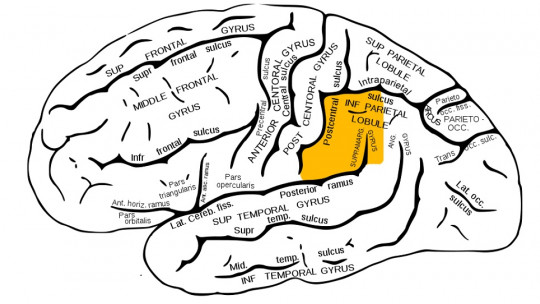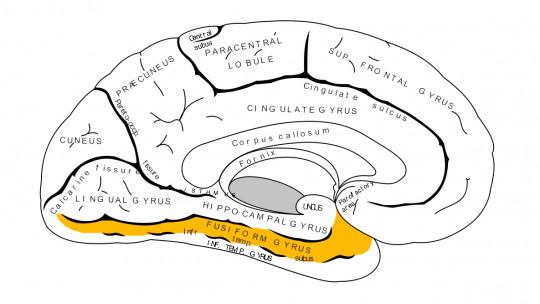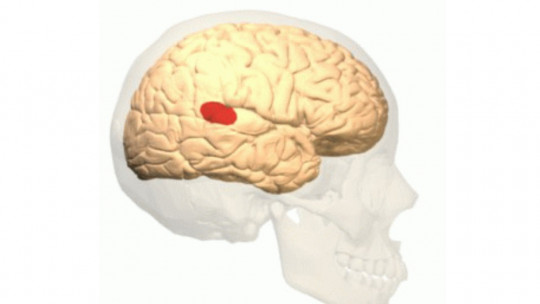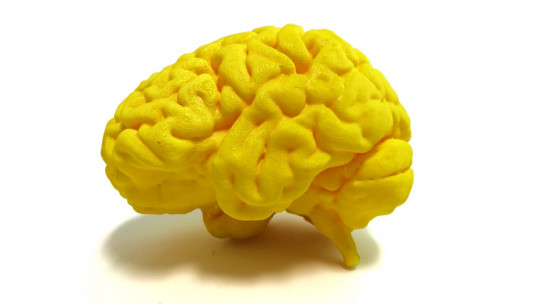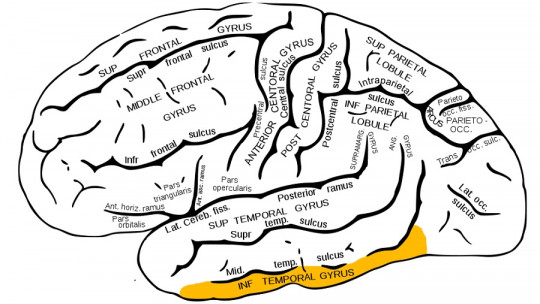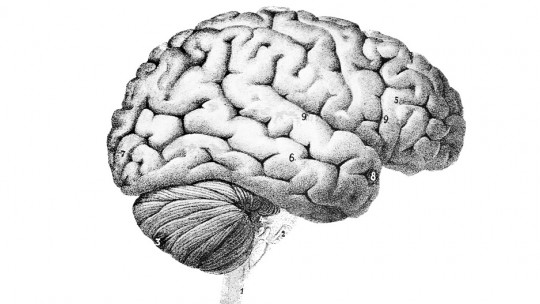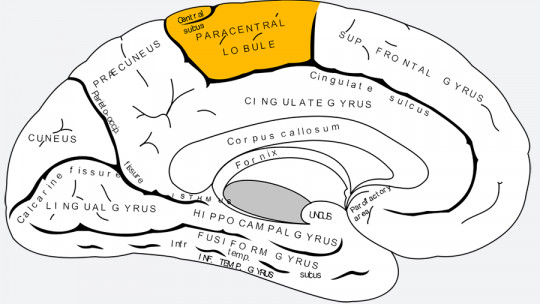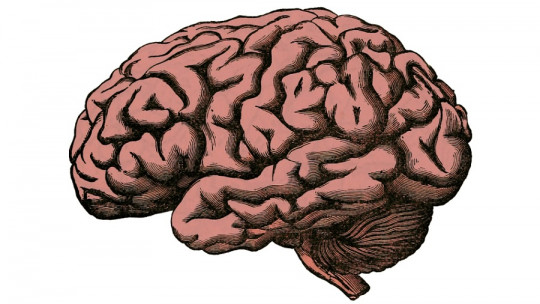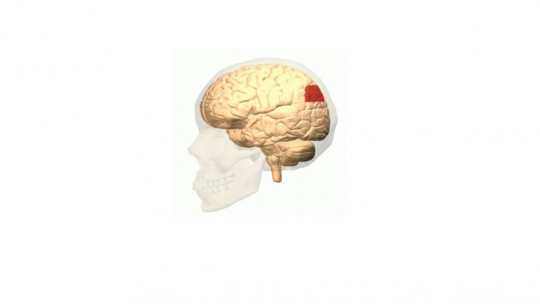
The person’s ability to understand what they hear or read is something that is done so automatically that we rarely stop to think thanks to which brain structures this is possible.
The angular gyrus is a region located in the parietal lobe of the brain, situated near the junction of the temporal, parietal, and occipital lobes. This area plays a crucial role in various cognitive functions and is implicated in several neurological disorders when impaired. We delve into the areas, functions, and associated disorders of the angular gyrus, shedding light on its importance in brain function.
These among many other functions, They are typical of the angular gyrus of the brain Throughout this article we will talk about what it is, where it is located, what its functions are and what happens when it does not work correctly.
The angular gyrus is a significant structure located in the parietal lobe of the brain, positioned near the junction of the temporal, parietal, and occipital lobes. This region plays a crucial role in various cognitive processes, including language comprehension, spatial awareness, memory retrieval, and mathematical reasoning. In this article, we delve into the functions and importance of the angular gyrus in the human brain.
What is angular gyrus?
Cerebral gyri refer to those mounds formed in the brain, caused by the folds of the cerebral cortex One of them is the angular gyrus, this gyrus is located in the posterior area of one of the cerebral gyri; specifically in that located between the intraparietal sulcus and the horizontal branching of the Sylvian fissure.
Furthermore, the angular gyration corresponds to Brodmann area 39, which together with area 22 and 40, form Wernicke’s area. This region of the temporal lobe is the so-called auditory associative cortex and its main function is to allow people to understand words and have the ability to produce meaningful speech.
An injury to this area of Wernicke’s can cause both blindness and speech deafness Word blindness, or alexia, is the inability to understand written words; while verbal deafness, or verbal auditory agnosia, consists of the inability to understand the words heard.
Finally, The angular gyrus is associated with the interpretation of language as well as with mathematics or cognition, integrating information from other areas of the brain. Next, we will see what implications the angular gyrus has on different brain functions.
Anatomy of the Angular Gyrus
The angular gyrus is a convoluted fold of cortex situated along the superior aspect of the temporal and parietal lobes. It forms part of the inferior parietal lobule, alongside the supramarginal gyrus. The angular gyrus is interconnected with adjacent brain regions, including the posterior cingulate cortex, superior temporal gyrus, and prefrontal cortex, facilitating integrated neural processing.
Areas of the Angular Gyrus
The angular gyrus encompasses several interconnected areas within the parietal lobe, including:
- Posterior Superior Temporal Gyrus: Adjacent to the superior temporal gyrus, this area is involved in auditory processing and language comprehension.
- Supramarginal Gyrus: Situated anterior to the angular gyrus, the supramarginal gyrus is implicated in tasks requiring phonological processing and working memory.
Functions of the Angular Gyrus
1. Language Comprehension
The angular gyrus plays a pivotal role in language processing, particularly in the comprehension of written and spoken language. It is involved in semantic processing, syntactic analysis, and the integration of linguistic information from auditory and visual modalities. Damage to the angular gyrus can lead to difficulties in understanding written text (alexia) or spoken language (aphasia).
2. Spatial Awareness and Navigation
The angular gyrus contributes to spatial cognition and awareness of one’s surroundings. It integrates sensory input from visual, auditory, and proprioceptive pathways to construct mental representations of space and facilitate navigation. Dysfunction of the angular gyrus may result in spatial disorientation, impaired navigation skills, or neglect of one side of space (hemispatial neglect).
3. Memory Retrieval
The angular gyrus is involved in episodic memory retrieval, the process of recalling past events, experiences, and factual knowledge. It interacts with other brain regions, such as the hippocampus and prefrontal cortex, to retrieve stored memories and integrate them into conscious awareness. Damage or dysfunction of the angular gyrus can lead to memory deficits and difficulties in recalling specific details or events.
4. Mathematical Reasoning
Recent research suggests that the angular gyrus plays a role in mathematical cognition and numerical processing. It is involved in tasks requiring arithmetic calculation, numerical estimation, and mathematical problem-solving. Dysfunction of the angular gyrus may contribute to dyscalculia, a condition characterized by difficulties in understanding and manipulating numbers.
5. Reading and Writing
It is involved in reading and writing processes, particularly in converting visual symbols (letters and words) into meaningful linguistic representations and vice versa.
6. Multisensory Integration
This region integrates information from multiple sensory modalities, such as visual, auditory, and somatosensory inputs, to facilitate perception, recognition, and comprehension of the external environment.
Associated Disorders
- Alexia without Agraphia: Damage to the angular gyrus can result in alexia without agraphia, a condition characterized by the inability to read despite preserved writing ability. Individuals with this disorder may have difficulty understanding written words and sentences despite intact language comprehension and writing skills.
- Acalculia: Damage to the angular gyrus can lead to acalculia, a condition characterized by difficulty performing mathematical calculations and numerical tasks. Individuals with acalculia may struggle with basic arithmetic operations, such as addition, subtraction, multiplication, and division.
- Semantic Dementia: Degenerative conditions affecting the angular gyrus, such as semantic dementia, can impair semantic memory retrieval and comprehension, leading to difficulties in understanding word meanings, object recognition, and knowledge about concepts and categories.
- Spatial Neglect: Lesions in the angular gyrus can contribute to spatial neglect, a condition characterized by a lack of awareness or attention to one side of space (usually the left side) following damage to the right parietal lobe. Individuals with spatial neglect may neglect objects or events in their left visual field and exhibit difficulties navigating their environment.
The angular gyrus plays a vital role in language processing, reading, writing, semantic memory, numerical cognition, and multisensory integration. Disorders associated with the angular gyrus highlight its importance in cognitive function and underscore the consequences of its impairment on various aspects of perception, cognition, and behavior.
Importance in Higher Cognitive Functions
Beyond its specific functions, the angular gyrus contributes to higher-order cognitive processes, such as attentional control, decision-making, and mental imagery. It serves as a hub for integrating information from multiple sensory modalities and coordinating complex cognitive tasks. Dysfunction of the angular gyrus can impact diverse aspects of cognitive functioning, leading to deficits in perception, memory, and executive function.
Clinical Implications
Understanding the role of the angular gyrus in cognitive functioning has important implications for clinical practice, particularly in the diagnosis and treatment of neurological and psychiatric disorders. Disorders affecting the angular gyrus, such as Alzheimer’s disease, stroke, and schizophrenia, can manifest with cognitive deficits related to language, memory, spatial awareness, and mathematical abilities. Neuropsychological assessment and targeted interventions aimed at preserving or restoring angular gyrus function are essential for optimizing patient outcomes.
What if you get injured?: Gerstmann syndrome
If, due to an injury or a neurodegenerative process, the angular gyrus suffers some type of damage, the above functions can be seriously affected.
Likewise, there is a specific syndrome associated with an injury or deterioration of this area known as Gerstmann syndrome.
This neurological disorder has been associated with damage or defective activity of the angular gyrus It is characterized by having very little incidence in the population and by manifesting itself through a set of symptoms related to sensation, perception and the coding of information coming from the different senses.
Symptoms of Gerstmann syndrome
Among the most representative symptoms of this condition we find the following.
1. Digital agnosia
This is one of the main symptoms of Gerstmann syndrome. This type of agnosia is distinguished by causing the person the inability to distinguish or identify the fingers of the hand, both their own and those of others.
This agnosia is not associated with any type of fragility or lack of tactile perception of the fingers. The person is simply incapable of naming, choosing, identifying or directing their own fingers.
2. Acalculia
Acalculia consists of the appearance of difficulties related to mathematical and arithmetic skills. Within this symptom, the person can manifest different types of deficits:
- Inability to perform mathematical operations both written and mental.
- Problems interpreting mathematical signs.
- Problems maintaining or continuing numerical orders or series.
- Inability to design sequences.
- Difficulty using numbers correctly
3. Agraphia
As far as written language is concerned, people with Gerstmann syndrome suffer from a deficit in the ability and capacity for writing. Also known as agraphia.
These patients show problems in transcribing heard words, in spontaneous writing and in copying.
Likewise, other symptoms of agraphia are:
- Alteration in the ability to draw letters correctly.
- Lack of symmetry of the letters
- Changes in the orientation of the lines in writing.
- Use of various fonts
- Invention of own characters.
4. Spatial disorientation
Patients with injuries to the angular gyrus They can also present problems in distinguishing left and right So apparently, there is a deficit in the lateral orientation of the body itself in space.
Furthermore, these patients have great problems when identifying the left or right plane of any object, place, spatial situation or even the parts of their own body.
The angular gyrus is a multifaceted brain region involved in diverse cognitive processes, including language comprehension, spatial awareness, memory retrieval, and mathematical reasoning. Its intricate connections with other brain regions facilitate integrated neural processing and support higher-order cognitive functions. A deeper understanding of the functions and importance of the angular gyrus enhances our knowledge of brain-behavior relationships and informs clinical approaches to neurological and psychiatric disorders.
Bibliography
- Hirnstein, M.; Bayer, U.; Ellison, A.; Hausmann, M. (2011). TMS over the left angular gyrus impairs the ability to discriminate left from right. Neuropsychology. 49(1): pp. 29 – 33.
- Lee, H. Devlin, J.T.; Shakeshaft, C.; Stewart, L.H.; Brennan, A.; Glensman, J.; Pitcher, K.; Crinion, J.; Mechelli, A.; Frackowiak, RS; Green, D.W.; Price, C.J. (2007). Anatomical traces of vocabulary acquisition in the adolescent brain. J Neurosci. 27(5): pp. 1184 – 1189.
- Vatansever, D.; Manktelow, A.E.; Sahakian, B.J. Menon, D.K.; Stamatakis, E. A. (2017). Angular default mode network connectivity across working memory load. Human Brain Mapping. 38(1): pp. 41 – 52.
- Rushworth, M.F.; Behrens, TE; Johansen-Berg, H. (2006). Connection patterns distinguish 3 regions of human parietal cortex. Cereb Cortex. 16(10): pp. 1418 – 1430.

